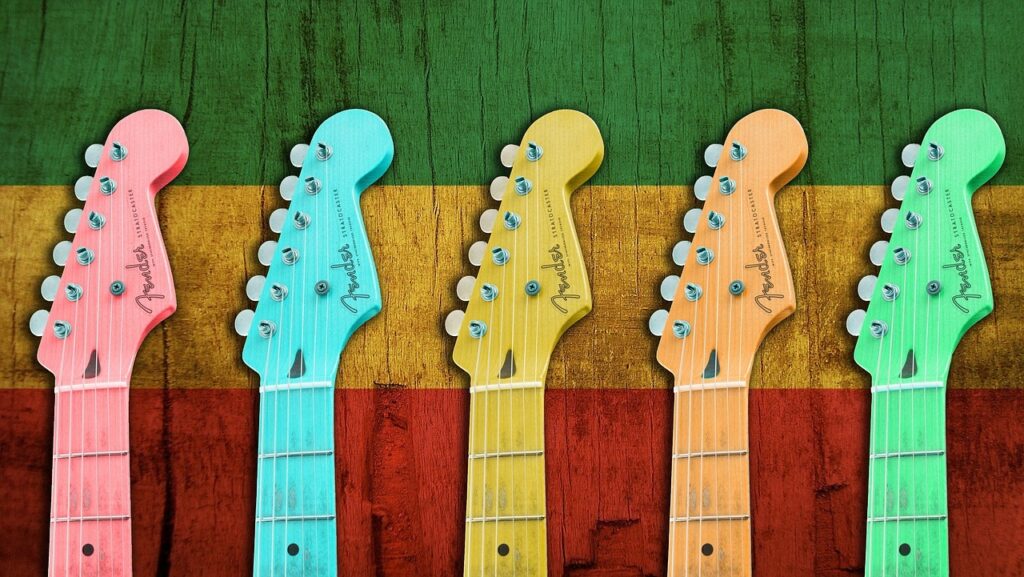Welcome to the NFT era of music
Written by WOM writer on September 1, 2022
In just a few years, NFTs have gone from niche to mainstream. Now, they’re beginning to transform the music industry by providing artists with new revenue streams and new ways to connect with fans, as we explore as part of The Drum’s Audio Deep Dive.
2021 will be remembered as (among other things) the year that NFTs went mainstream. Sales exploded that year, reaching a peak of around $24.9bn, up from around just $95m the year before. Major corporations including Coca-Cola, Adidas and Taco Bell started capitalizing on the new gold rush, launching their own NFT campaigns. The now-famous Bored Ape Yacht Club series was minted, Pete Davidson and Jack Harlow rapped about NFTs on SNL and auction house Christie’s sold more than $100m worth. The market was booming.
In those early days, the benefits and potential applications of NFTs seemed endless. There were of course skeptics, as there are today, who viewed them as an asset bubble that would eventually and catastrophically burst. But to the true believers, NFTs represented an opportunity to throw off the yoke of centralized control that had so long dominated the internet, to establish financial autonomy and to push the bounds of creative expression.
Most artists stood to gain from the rise of the NFT market. Here, finally, was a technology that could allow struggling artists to both establish stronger connections with their fans and earn a decent living. NFTs arguably held particular promise for the music industry, which had become notoriously bureaucratic and exploitative over the decades. Many musicians only receive a small fraction of the money that’s being earned from their creative output – much of it goes into the pockets of agents, lawyers, record label executives, marketers and a host of other intermediaries. To be fair, those intermediaries are often essential ingredients for a musician’s success; no one becomes a superstar all on their own. But there’s long been a growing feeling throughout the music industry that musicians are being left with an unjustly small slice of the pie; Kanye West once famously called the industry “modern-day slavery”.
The advent of streaming has, of course, been a game-changer for artists, but it’s a double-edged sword. Yes, it has made it possible for artists to reach vast numbers of previously inaccessible listeners around the world and has made it easier for listeners to discover new artists and expand their musical horizons. But it doesn’t pay much (Spotify, the world’s most popular music streaming platform, pays around $0.003 a stream, equating to roughly $1 for 3,000 streams), and it’s an algorithmically-run ecosystem, which occasionally means that artists whose sounds don’t fit a particular mold get lost in the noise, so to speak, while the Dua Lipas and Ed Sheerans of the world – artists with a tried-and-true pop flavor – are perpetually pushed to the fore and attract the majority of public attention.
Kelsey Byrne, who goes by the stage name Vérité, is one of those artists whose sound definitely colors outside of the conventional lines. Her music is funky with a techno-pop edge, like a hybrid between Sylvan Esso, Lorde and Flume. “It definitely exists in its own category,” she says, “[which] presents its challenges in an algorithmically-playlisted, mood-based world.”
Unwilling to compromise the essence of Vérité (which translates roughly to ’truth’ or ’truthfulness’), Byrne decided in 2020 to begin dabbling in blockchain technology as a means of both creating additional revenue streams and bypassing the all-powerful streaming algorithm to connect with her fans. “Do I want to play this game of [trying] to be algorithmically pleasing? No, I’ve worked too hard to maintain independence and creative autonomy,” she says. “I’m going to pivot … into experimenting with web3.”
She has launched several NFT projects since that initial, fateful decision. Just last year she partnered with the NFT company Royal to drop a collection of 505 tokens alongside the release of her song He’s Not You; each token gives its holder a sizable share of streaming royalties for the track, in perpetuity. (The song currently has a little under 1.7m streams on Spotify.) It was a multi-tiered NFT drop; the size of the royalty percentages that a token-holder could earn were correlated to the status and price of the tier. The top-tier, or ’diamond’ NFTs, of which there are only five, came with a share of over 0.85%, along with signed cassette tapes and a video call with Byrne.
Later this month, she’ll be dropping what she describes as “NFT-embedded merchandise that will act as the key to access the next era of Vérité”. Fans will be able to buy a Vérité-branded sweatshirt containing a microchip that can be scanned with one’s phone to access exclusive content, including the name of her next album, the album’s trailer and a new single. It’ll be like wearing a digital link to Vérité herself, a cozy portal that can lead the wearer beyond the realm of mere, everyday fandom and into the realm of something more akin to a collaborative community of creativity.
That feeling of community and reciprocity is one of the major benefits that NFTs can bring to musicians. Vlad Ginzburg, chief executive officer of Blockparty – a company that helps artists and brands launch NFTs – says that it should vary from artist to artist and should reflect the unique qualities of a particular artist’s fanbase. “Chances are, if we can figure out the fans’ culture, then we [can] release an NFT that defines that culture,” says Ginzburg. “[An] NFT ought to be a representation of what that culture is all about.”
An uncertain future
In addition to her talent and ability to adapt to an ever-changing industry (she describes herself not only as an artist but also as “a creative problem-solver”) Byrne’s harnessing of web3 has enabled her to build a strong and dedicated fan network and to remain independent. “I made a commitment a long time ago to do things my own way and to play my own game, both creatively and in how I write, produce and distribute music,” she says. “I’m not going to dance on TikTok. I’m just not going to do it.“
At the same time, she strives to stay nimble, ready and able to evolve and change along with the broader web3 movement. “The culture of web3 is going to shift and attaching yourself to any growing and changing culture is probably a mistake,” she says. “I don’t hitch my wagon to anything.”
The wisdom of the unhitched wagon approach to web3 has been clearly demonstrated these past few months, as the values of leading cryptocurrencies have plunged to historic lows. Many headlines have speculated that these might be the beginning of the end both for crypto and NFTs. But for many of those who are actively building in this space, this isn’t a time to chuck the towel in – it’s a time to rebuild so that web3 can emerge stronger than ever. Ginzburg, who compares the health of the web3 market to tides, inevitably bringing both highs and lows, says that moments like this are actually healthy for the long-term success of the industry.
“The tide going out is actually very necessary for a lot of us to go back to work and keep working on it,” he says. “This is still very new technology and it’s still a very long build. So [at] times like this … you’ll see who was swimming with no bathing suit. You’ll see some of the BS stuff, you’ll see some of the scammers … we actually are kind of happy when the tide pulls out to see some of the bad actors get exposed and shuffled out of the way.”
Source: TheDrum.





